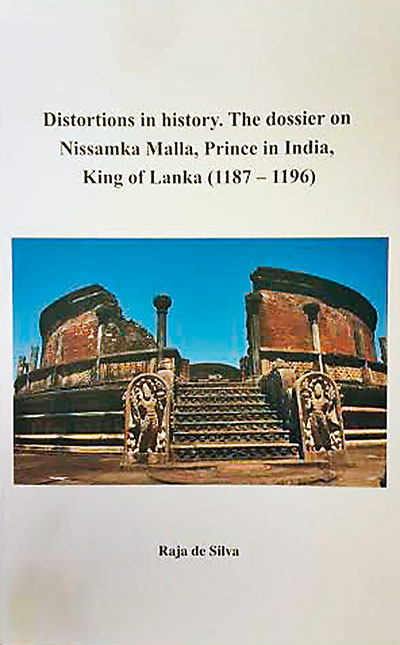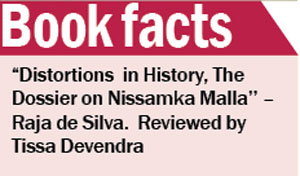Restoring a much-maligned King to the greatness he deserves
View(s): Archaeologist and scholar Raja de Silva (who never flaunts his many qualifications) once again takes up his pen and spade to fight a worthwhile battle to restore the reputation of King Nissamka Malla of Polonnaruwa – sadly denigrated by many prejudiced scholars over the last century. With the same masterly skill he brought to prove, beyond all doubt, that Sigiriya was a monastic complex and not a palace in the sky or a last redoubt, Raja analyses Nissamka Malla’s (NM) fascinating origins in the Eastern Indian kingdom of Kalinga, with whose ruling class Sri Lanka’s royalty shared matrimonial alliances fostered by flourishing maritime links.
Archaeologist and scholar Raja de Silva (who never flaunts his many qualifications) once again takes up his pen and spade to fight a worthwhile battle to restore the reputation of King Nissamka Malla of Polonnaruwa – sadly denigrated by many prejudiced scholars over the last century. With the same masterly skill he brought to prove, beyond all doubt, that Sigiriya was a monastic complex and not a palace in the sky or a last redoubt, Raja analyses Nissamka Malla’s (NM) fascinating origins in the Eastern Indian kingdom of Kalinga, with whose ruling class Sri Lanka’s royalty shared matrimonial alliances fostered by flourishing maritime links.
Nissamka’s youth was spent in Kalinga learning the princely skills of warfare and ‘Arthasastra’ – essential for a prince-in-waiting. When the call came from his uncle the great Parakramabahu, he sailed to his promised land and prepared himself to be king. Although the Mahavansa does not devote many verses to him he is referred to in complimentary terms.
Many centuries later, Archaeological Commissioner Bell called NM “an unconscionable braggart” on the basis of the many laudatory inscriptions NM left throughout the length and breadth of the country, (I wonder what a future Bell will have to say about the many hundred foundation stones now littering the countryside). Sadly, almost all later historians unquestioningly accepted Bell’s unscholarly and simplistic evaluation.
NM had the great good fortune to rule a country over which the great Parakramabahu had established peace and prosperity. As Raja says, this gave him the peace to travel the length and breadth of the country, even braving the Peak wilderness to pay homage to the Sri Pada. He marked his many ‘circuits’ with inscriptions ‘in situ’. Amazingly, he even forestalled Napoleon by installing ‘Nissanka gavuta’ marking accurately measured distances on his roads.
His knowledge of the Buddha Dhamma is demonstrated by the measures he took to cleanse the Sangha – which seems to have deteriorated in spite of Parakramabahu’s purification. NM exemplified the Roman practice of ‘bread and circuses’, a centuries old strategy of kingship, by his regular participation in the popular water festivals ‘diya keli’. I hope that a future student will attempt to describe the various many watery ‘fun and games’ our ancestors enjoyed.
An interesting aspect of NM’s inscriptions is his denigration of the ‘govi kula’ as unfit for kingship. To me, the explanation is simple. There has always been a subterranean power struggle between the native-born aristocrats and the foreign-rooted royal family. Centuries later in 1815 this very struggle brought about the end of the millennia old Kingdom of Tri Sinhale.
Nissamka’s greatest achievement is the construction of the architectural wonder of his capital Royal Polonnaruwa. Raja does a wonderful job of illustrating and describing its many gems (one of which has been brashly emulated as a theatre in Colombo).

Raja’s typically bold venture into the wilderness of imprecise, and unquestioning, “scholarship” exhibits the hallmark of a meticulous and unprejudiced scholar. The shade of Nissamka Malla, in his celestial abode, will cast a symbolic laurel wreath on this scholar who restored him to the greatness that he richly deserved – but eluded him for the last century.


